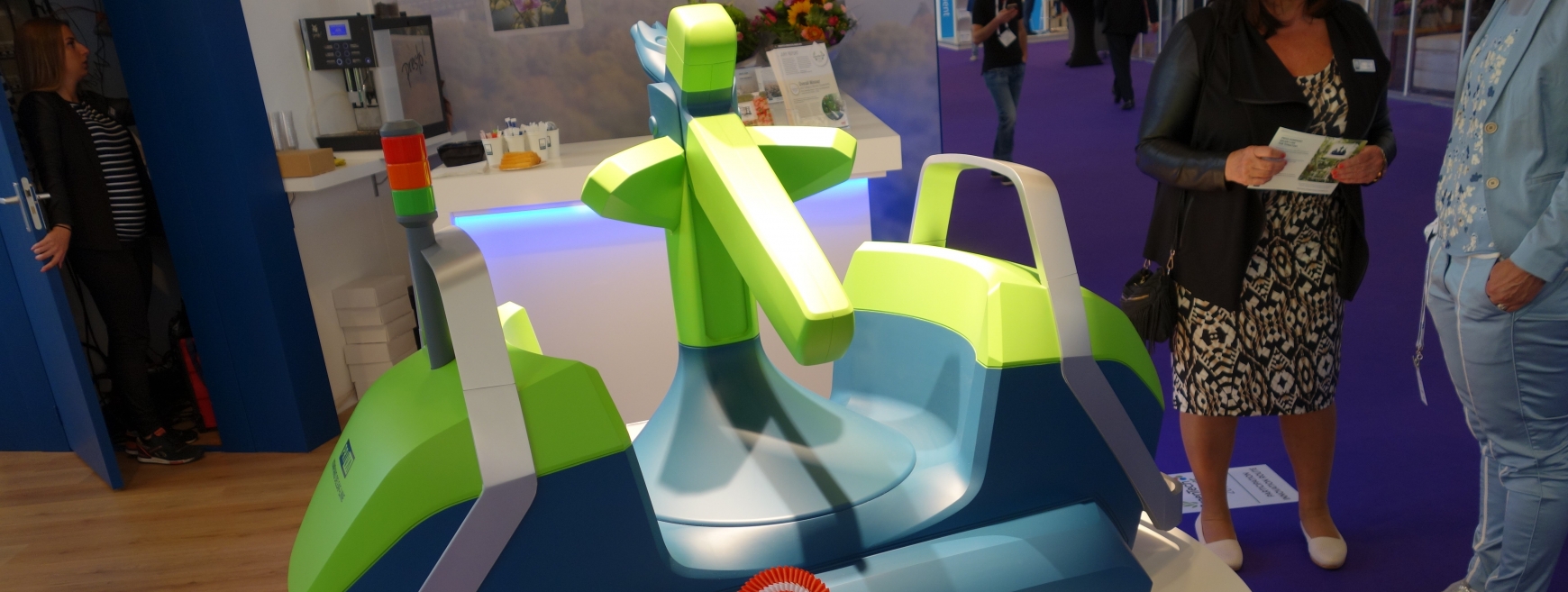With the rise in robotic solutions in horticulture, our GrowSave* project considers how this might impact your energy use and costs.
As more and more technology is introduced to the horticultural world, energy demand is also very likely to rocket up.
Of course, automatic solutions are already being used across many processes in horticulture, alongside their human operators – salad packing lines and ornamental pot spacing for example. Harvesting is the next challenge for the industry: it’s one of the most labour-intensive areas.
Robotic solutions to picking field vegetables like lettuce are in their early stages. At the moment, robots harvest considerably slower than their human counterparts. A study by Cambridge University achieved a robotic harvest rate of just one head lettuce every 30 seconds, which is much slower than human labour.
Other industries do manage, however. Retail giant Amazon used to pack all of its deliveries by hand, but now has machines that can pack boxes up to five times faster than humans.
If the industry manages to improve the speed and operating efficiency of harvesting robots, they’re likely to be able to operate for considerably more hours than humans.
But, an increased robotic solution to the labour shortage would have high energy demands. How might we meet this demand?
On-site generation
It is likely that energy generation, and potentially storage, will have to become a factor on many sites - especially where the local electricity network is constrained.
The type of generation will have to be carefully considered, depending on when electricity is required, and whether the source matters. For example, solar photovoltaics (PV) might be located on-site. However, if your automated processes take place consistently throughout 24 hours, then this wouldn’t be an ideal match. Conversely, an anaerobic digester (AD) or natural gas engine could be generating at a consistent level all day long, satisfying the on-site requirement for electricity. A site with continuous generation like an AD plant would be able to make the most of cheap, on-site generated electricity all day long.
The fluctuation in energy production from some renewable generators has limited its uptake so far: a site needs to be able to utilise as much of the energy generated as possible rather than export it to the grid to make it worthwhile, even if that production is dependent on the weather.
Local network
Local electricity networks are creaking at the moment and getting connected to the grid is difficult and costly. This might make the case for on-site generation all the more attractive. Many areas that are constrained are being controlled through Active Network Management (ANM).
In some cases, Demand Side Response (DSR) is used to control loads on the local network. For example, a site might be asked to switch off supplementary lighting if demand is too high.
Energy networks can also be managed actively to control the flow of energy into the network from local generators. If the network is strained and generation is too high, then those generators can be curtailed. Those that were given their grid connection capacity most recently would be forced to turn their generation off first, then the next most recent grid connection and so on until levels of export reach sensible levels again.
Energy storage
Energy storage could well feature in the industry’s solution to increased demand. We’re seeing similar developments in the electric vehicle world, where many electric vehicle charging stations around the UK are coupled with battery banks. The battery banks are charged steadily from the energy grid, but can also deliver enough power to charge cars quickly. This puts less pressure on the grid connection and still supplies the demand required.
The same kind of system could also work for charging horticultural robots and meeting other on-site loads around the clock.
Economics
At the end of the day, operating a smarter growing facility will all be about cost – both capital and operational. Regardless of the capital cost, if the operation can’t be achieved economically, then the benefits of automation will not be realised.
As the technology develops, it may well be more economic to time robotic operations to happen when there’s either cheap import electricity (like the overnight economy tariffs available from many domestic suppliers) or when on-site electricity is generated.
Should you automate?
Before embarking on an automation project, businesses need to consider how much energy the operation would need, both at peak and standard running. Is there electricity capacity on-site to run it? Where would the cheapest electricity come from? Is on-site generation an option? How often does the automation need to operate? And what is the cheapest time to run the robots?
The key point is: don’t neglect the cost of operating your automation. Energy is expensive, and annual running costs can be much more than the capital expense of installing the robots.
You can find out more about energy technology and costs, visit our website growsave.co.uk.
*The GrowSave Project is delivered by us on behalf of the AHDB Horticulture— a levy-funded organisation that serves the commercial horticultural industry in England, Scotland and Wales.


